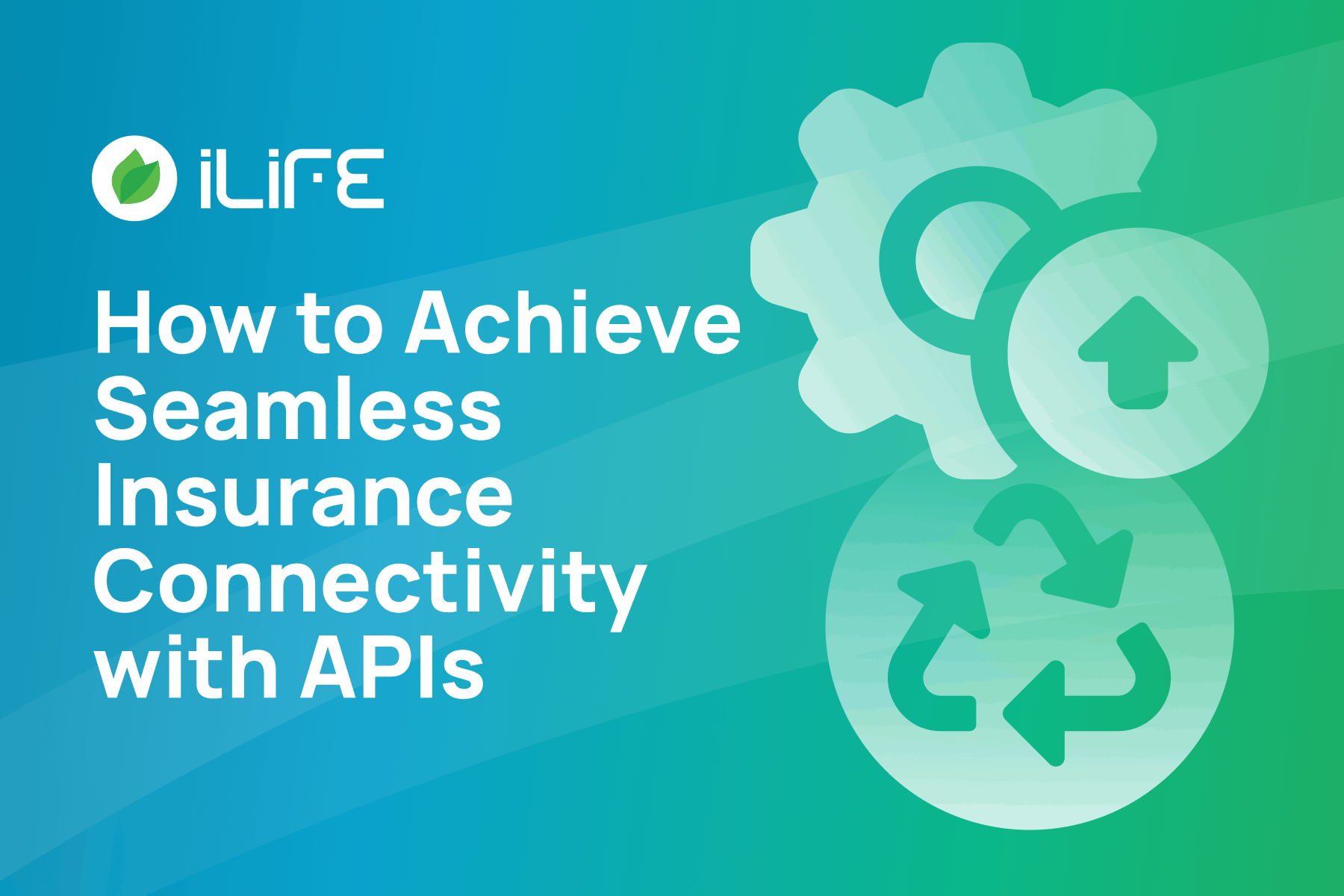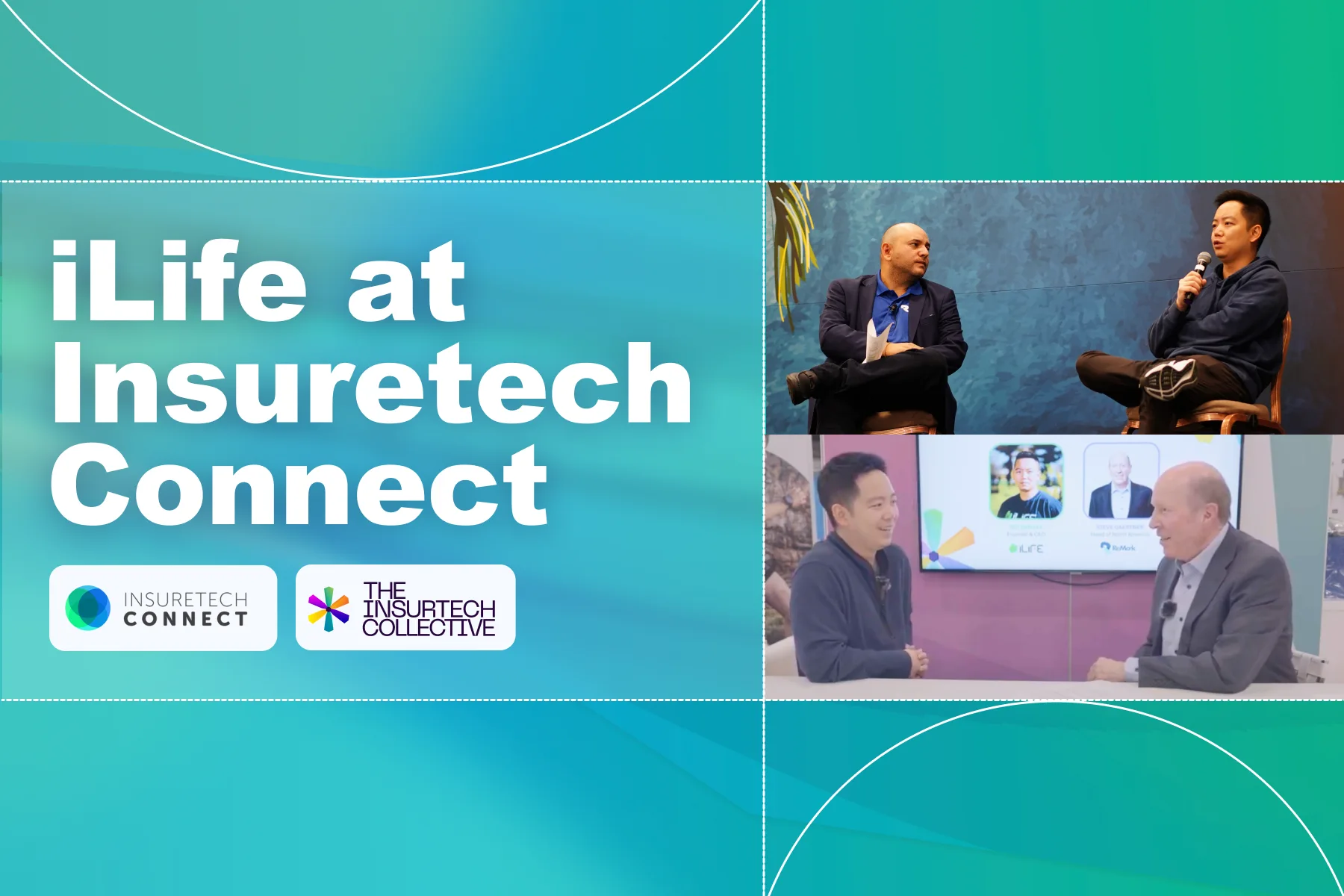How can we pursue digitalization in the life insurance industry without losing the human touch? Nelson Lee, Founder and CEO of iLife Technologies, and Christian Brisson, Head of LATAM at ReMark, discussed how insurance solutions can bridge the human-digital gap.
The Importance of Human-Digital Interactions
Early in their discussion, Nelson Lee and Christian Brisson explore the move toward digitalization within the insurance sector. Nelson Lee considers that while the move to digital unlocks vast benefits for agents and consumers alike, we must be careful not to forget the human element.
“Human-digital interaction involves online and offline behavior, and digitization needs to take that into account.” The iLife CEO continued with the example that you may send someone a WhatsApp message or call them on the phone, but that doesn’t mean you never see them in person to grab a coffee.
As humans, we interact both physically and digitally. Nelson Lee attests that the insurance industry should mirror this instead of completely eliminating personal interactions that are critical to insurance distribution, education, and awareness.
Building Tools with Agents in Mind
Nelson Lee recounted his personal experience as an ex-engineer, observing that many tools are built by engineers for other engineers. In the insurance industry, this practice hinders the development of tools focused on the end-user and agents, resulting in lower adoption.
To make agents a vital part of product and service design, tools must be more intuitive for non-engineers. Nelson Lee exemplified this by mentioning iLife, which takes an all-in-one approach. He cited the introduction of the iPhone, which combined the capabilities of a cellular phone, laptop, CD player, and camera into one device, as an example of the power of an all-in-one solution.
“How do we impact end users, both agents and consumers alike, so they feel the same way about our product the way we used to feel about the first iPhone?” asked Nelson Lee. iLife seeks to emulate the impact of this innovation by offering agents an all-in-one solution that can replace the multitude of platforms they use to complete their tasks today.
Christian Brisson: (00:09):
Like I said, my name is Christian Brisson. I’m the head of LATAM for Rework, and I’m happy to be with you today. Rework leveraged the findings of our GCS study to help guide our innovation roadmap and partnership strategy.
One such insurtech partner is iLife, a Silicon Valley insurtech that increases agent productivity. Together, we’re helping agents grow by combining technology with intelligent marketing. I’d now like to welcome the founder and CEO of iLife, Nelson Lee, to the stage.
Nelson Lee (00:42):
Hi everyone. I’m the founder of iLife Technologies, a software company that builds front-office software to deliver agent and consumer experiences for insurance carrier distributors. I come from a computer science background, but like Christian, I’m very passionate about solving problems in the insurance space.
Christian Brisson: (00:58):
Thanks, Nelson, for introducing yourself. We’ve had a lot of conversations, right? But I never asked you this: Why did you create iLife?
Nelson Lee: (01:08):
I created iLife from kind of an accident. So, I had a company before.
Christian Brisson: (01:16):
A really nice accident, by the way. Yeah,
Nelson Lee: (01:18):
Now, I didn’t know at the time, but yes, it’s been a good accident. So, I had a company before this where it wasn’t venture-backed; it wasn’t at scale, but our business model was to work with insurance agents and agencies, and in working with insurance agencies and distributors, we had to work with all their carriers indirectly. And in working with all their carriers and see how they work with agents, I discovered, wow, agents have to deal with a lot.
It’s like five, six systems within the same carrier, and then to deal with like 12 carriers for business, that’s like dozens and dozens and dozens of systems that sometimes don’t connect well together or sometimes just don’t connect at all. So, I just asked these agents and agencies, like, how do you deal with all this? Did you ever think that everything could be in one place or it would be a better human digital experience? It gathered enough insights, and an accident happened, I decided to found a software company, and four years later, here I am.
Christian Brisson: (02:20):
And great.
Now, there’s another thing that I wanted to talk to you about, which is there’s a misconception in the industry that digitalization, we need to go from paper-based processes to 100% digital, right? And what have been some of the most interesting human digital behaviors you have observed through your platform?
Nelson Lee: (02:46):
Yeah, I mean, there’s always talk about like, oh, we need to have less paper, more digital, and yeah, like less paper, more digital is good, but that’s just a symptom, right? The root problem is like, how do we really interact as humans, right? It’s true we interact digitally, right? I’ll send you something on WhatsApp or a phone call, but I also see in real life, we go to a restaurant and go grab a coffee, so like, yes, digitization is good, but it’s not the only abrasive human. Digital interaction involves online and offline behavior, and digitization needs to take that into account. Our interaction as humans and as users is not black and white.
It’s not all offline paper, and it’s not all digital. The two are not mutually exclusive. Like I hope, if I see you in a coffee shop, that doesn’t mean I can’t ever send you a WhatsApp, right? Of my own. You can see from this study and the general distribution of premium from carriers that a very significant, if not majority, of premium comes from some type of human interaction, if not human initiation.
Obviously, this differs across product line and geography, but in general, I think it’s undisputable that human interactions are very, very critical to the distribution of insurance, and the education, awareness, and marketing of insurance.
Christian Brisson: (04:07):
Okay, thanks.
Now, talking about human interaction and digital tools, what I have seen is the aging adoption. They sometimes quarrel about adopting new technologies, right? So, can you please tell us what are some ways that carriers can help to ensure their agents and leveraging this available technology?
Nelson Lee: (04:30):
Yeah, and this is kind of funny because, as an engineer or ex-engineer myself, I see this problem a lot. Many of the tools from the older days were really tools built by engineers for other engineers. For example, an engineer wanted to build something else so another back-office IT person could get something done.
Well, that’s very nice, if you’re a back-office IT person, but for agents, the use case is not in the back-office. The agent doesn’t care who builds what in any language or interface. The agent wants to make sure, if I’m a question, I need to get a quote, I need to find a policy, how do I do that online, offline, that works seamlessly together? And I just think some of the stuff from the older generation was designed with a different kind of product design thinking and user study in mind, right?
They never used to study internet users, in part because there were not as many internet users. Now we know how internet users began on a much deeper level, and we engineers should stop building for other engineers unless you were building a dev tool, which we’re not.
Christian Brisson: (05:37):
Okay, so there are a lot of tools on the market, right? What would be a differentiator that you can tell us about iLife?
Nelson Lee: (05:53):
Well, at the attempt of not trying to make this an advertisement about my company, but we try to make things more all-in-one, because I think all-in-one is intuitive, even if it wasn’t iLife, right? Anything that’s more all-in-one is intuitive for non-engineer users of technical products, whether it’s hardware or software, right? Do you all remember the days before the iPhone, so pre-2007? What do we have to carry? We have to carry a cellular phone, a CD player, and a laptop that had a web browser.
Christian Brisson: (06:20):
And a video Camera.
Nelson Lee: (05:53):
Oh, yes, and a camera. Well, I don’t. I have a terrible, but yes, if I were a better photographer, I would carry a camera. There’s a lot of stuff you had in your backpack, right? And frankly, probably none of us really care how it’s made or engineered, but the fact that Apple put everything in one phone, that’s pretty impactful, right? That’s really impactful, and I think building software insurance shouldn’t really be anything different.
It’s like, how do we impact the end user, which is never just a consumer? Although we’re talking about the consumer side, consumers reach many insurance companies through agents. How do we impact end users, both agents and consumers alike, so they feel the same way about our product as we used to feel about the first iPhone?
Christian Brisson: (07:06):
Also, I want to ask you: Do you think that in our lifetime, the digital transformation is going a little fast or a little slow? What’s the pace for our market?
Nelson Lee: (07:16):
I think it could be extremely fast, if not faster than what the U.S. had to do, because of initial transformation, because, well, number one, the technology now is much more mature than when the U.S. went through their first transformation, and number two, our time, relatively to the U.S., is much more under-penetrated in terms of technology. So, if you deliver a less painful experience or great experience, if that’s more convenient, it will stand out a lot more, and it will be more impactful.
Christian Brisson: (07:06):
Thank you, Nelson, for being here with us today. Thank you for responding to all of our questions. And as a final message, I think that digitalization is where we are heading, but we’re still not yet, at least in that time. So we need to provide the agents or the Salesforce with the right tools, such as iLife or other tools.




